#spine deformity treatment
Text
Diagnosis and Treatment of Scoliosis in Ahmedabad
IndoSpine Hospital is one of the most trusted hospitals for scoliosis treatment in Ahmedabad. Our department of spine and scoliosis surgery is equipped with the latest machines for accurate diagnosis and effective treatment. We have a multidisciplinary team of doctors, surgeons and nursing staff who ensure that you receive proper care during and post the course of treatment. Book your appointment today for a consultation.
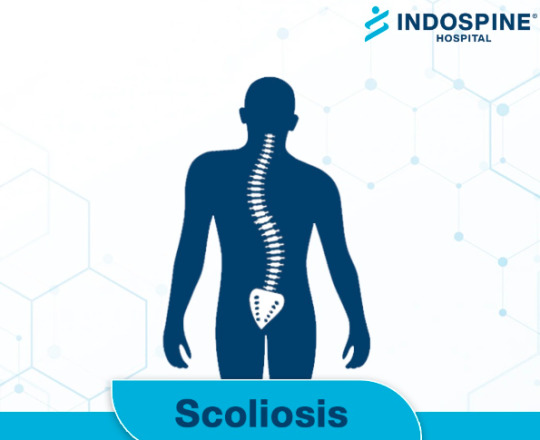
#spine deformity treatment#scoliosis treatment#Spine hospital#Spine doctor in Gujarat#Spine specialist#Lower back pain treatment#indoSpine Treatment
1 note
·
View note
Text
Balaji Hospital | Expert Anesthetists Ensuring Safe Surgical
Balaji Hospital's Anesthetist showcases their skilled team who ensure safe surgical experiences by working closely with surgeons to customize anesthesia plan

#Anesthetist#Neurosurgeon#Complete cancer care#Onco Physician#Multi disciplinary treatment to rehabilitation#Onco Surgery#Children with spine and limb deformities#Orthopedic Surgery#Pediatrician#Spinal cord injury#Physiotherapist#Reconstructive surgery#Hand surgery#Microsurgery#Treatment of burns#Plastic Surgery#Emotional illness#Psychiatric#Interventional radiology#vascular radiology#Palliative medicine#Radiologist#Comprehensive diagnostic and treatment services#Urology#Ventilator for artificial breathing#40-bed hospital#Holistic approach to illness#4 Different Health checkup Plans#Delivering quality health care#40 beds ISO 9001:2000 certified Hospital
0 notes
Text
Orthopedic Surgeon In Delhi | Scoliosis
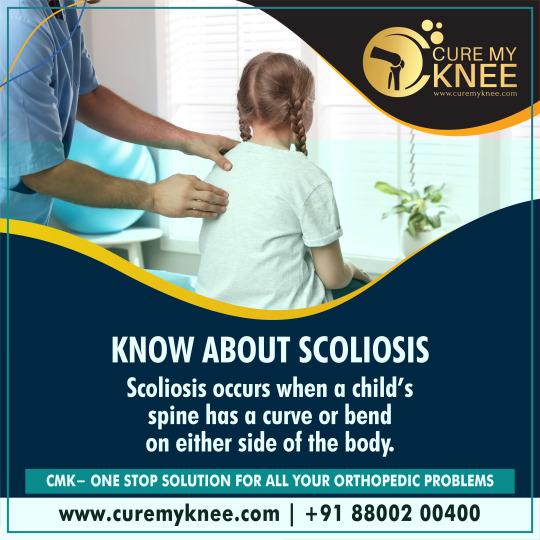
Scoliosis refers to an abnormally curved spine that tends to arise in childhood or early adolescence. The curvature can be in any part of the spine, but the most commonly affected regions are the upper spine and lower back.
The most common symptoms of Scoliosis are:
- Unequal hip and shoulder levels
- Imbalance in limb length
- Limp while walking
- Ribs on each side may be of different heights
Keep following us to know more about other bone deformities in children!
📞Talk to an expert: 8800200400
🌍 Website: https://curemyknee.com/
.
.
#curemyknee#scoliosis#scoliosisawareness#scoliosissurgery#child health#childhood#health#Healthcare#orthopedic doctor#orthopedic surgeon#symptoms#treatment#spine#ribs#shoulder#deformity
0 notes
Text
Dragon Injury Reference
[More like speculation than ‘reference,’ but i did research for this. I always recommend doing your own research, too]
WINGS [Specifically webbed/bat wings]
- Wings are FULL of blood vessels, and will probably bleed a surprising amount if cut or punctured. These sorts of injuries heal can without much treatment, even if a large amount of the wing membrane is missing
- Fractures of the wing should be splinted, and put into a wing wrap/sling
- A dragon missing a wing wouldn’t be able to fly again, except with an extremely advanced prosthetic. Lots of small movements. Also having to get used to the weight difference
-An aesthetic prosthetic could still be used to combat lopsided-ness, but would be bigger and more unwieldy than other sorts of prosthetics
MISSING LIMBS
- A three-legged dragon would be able to walk and run normally, once they get used to the shifted centre of mass and balancing on only three legs
- Arthritis IS more common because of the extra pressure on the remaining joints. Would be worse for heavier dragons
- Wings could probably be used to balance/support body, if they’re large enough to touch the ground
- Missing just the tip of the tail probably wouldn’t affect much, but larger portions WOULD as that’s a lot of body mass to suddenly lose
- Tails also help with balance when running and steering when flying, so a dragon might trouble getting used to the difference
HORNS
- Horns are have a core of bone covered with a sheath of keratin, and never shed. They are difference from antlers, which are pure bone and do shed.
- The tip of a horn is solid keratin, and will not bleed. Could be sanded or filed down for aesthetic purposes, but otherwise not a big concern
- Closer to the base WILL bleed, and should be treated accordingly.
- Horns will regrow over several months or a year, but closer to the base they may not regrow at all. Deformation upon regrowing is also common
MISC
- Some reptiles can get Metabolic Bone Disease [MBD] from lack of sunlight/uvb. This causes the bones to weaken, which increases the likelihood of fractures and can make the legs/tail/spine crooked, among other things. In WoF specifically, I head-canon Rainwings, Leafwings, and Sandwings are susceptible to this.
- Scales over a healed injury may be smaller and irregular. Also takes a little bit for the scales to grow back in the first place
- running out of juice for this but. something something infection of whatever organ produces fire/breath weapon. Think that’d be neat.
#wof#wings of fire#dragon#The other day I was rping a dragon with a wing injury and realized I didn't know what that'd look like#so thats what this is about#made with wings of fire in mind but can be used as a general reference#tw injury#tw amputation
887 notes
·
View notes
Text
sweet things
oikawa tooru x gn!reader
a/n: had to dump this b4 my brain explodes
there’s something about you that makes tooru just want to sit you on a beautiful throne and offer you all the love and possessions he can give you. maybe it’s the way you get flustered with every sweet thing he does, or the way you give your all in showing him the love he deserves — it’s apparently an innate desire to see you glowing with joy and love.
case in point, while he likes to act as if he were only doing it because it looked like your spine was about to deform from the weight of your bag (it really wasn’t heavy), he likes to insist on carrying your bag, especially when you’ve been adjusting its handle or strap on your shoulders. even if you do decline the offer, you’ll find yourself smiling when you feel the bag lighten a bit (it’s definitely not because of him lifting the bag from the bottom).
another thing is keeping you out of harm’s way. whether or not you’re a clumsy person, his spider senses activate as soon as you do something that may potentially harm you.
something fell under the table? he’s immediately covering your head with his hands when you crawl down to get it back.
filming the beautiful scenery? tooru already has his hands on your waist to keep you from bumping into people or tripping over your own feet.
but, what if you’ve already hurt yourself? he’s already on his way to fulfill his duty as your nurse… after he finishes laughing, of course.
lastly, while his job as a pro player takes up most of his time, he does his absolute best to make time for you. and, during those day offs he gets to spend with you, he’s paying full attention to you.
he loves hearing you talk about your day, especially when you go into full detail like how the music you were playing was coincidentally matching a random pigeon’s stride, or even how a little pebble in your shoe somehow threw off your luck for the day.
what he loves the most though is when you sit him down on the bed to watch you try on everything you bought that day. tooru’s fully engrossed in the try-on haul and acts as if he was invited to paris fashion week, watching models strut down the runway. he even goes as far as acting like a photographer and going into all sorts of weird poses to “get the best angles” when you model by the doorway.
and during those days you feel as if you’re truly unworthy of the treatment he has been giving you, he’s quick to wrap you up in his arms and remind you that you deserve everything in this world and so much more than what he can offer you.
“i love you, y/n. everything i do for you is because i love you and you love me. i don’t care if you think you don’t deserve it because it’s my choice, and i believe you deserve it and so much more. you are a person worthy of unconditional love and care, i hope you will understand this. it doesn’t have to be right now, but i hope it’ll be in the near future, my love”.
#haikyuu#oikawa x reader#oikawa tooru x reader#haikyuu x reader#haikyuu fluff#haikyuu imagines#haikyuu scenarios#cherrye.writes
131 notes
·
View notes
Text
it might seem weird at first but it's true that having symptomatic joint hypermobility (meaning the "bad" kind of hypermobility that results in chronic pain, a proneness to dislocation/sublixation, etc. such as in EDS, hypermobility spectrum disorders, and other CTDs) doesn't necessarily mean being very flexible and sometimes this can potentially present a problem when it comes to accurate assessment and diagnosis. part of this is because flexibility doesn't just involve joints; it also involves muscles and other soft tissues.
i have generalized symptomatic hypermobility (either gHSD or hEDS, who knows because it's not like i'm getting properly diagnosed anytime soon) and i'm an 8/9 on the beighton scale. i've been incapable of touching my toes since elementary school because my hamstring muscles have shortened over time due to the strain from compensating for hyperextended joints and hypotonia. i can't meet the 9th beighton criteria where i place my palms flat on the floor without bending my knees, but that doesn't mean i don't have a hypermobile spine, because its my shortened hamstring muscles that are preventing the movement, not the joints. i was just doing stretches at the gym earlier today for cooldowns that looked absurdly easy for the able-bodied person in the video i was following but i couldn't bend my legs to the full extent that they did due to other shortened muscles in my legs, which is also a consequence of hyperextended joints and hypotonia.*** i think it's easy to guess why something like that might end up masking the full extent of joint hypermobility in some people.
(***for people who don't know what hypotonia is, it's when there's inadequate tension in the muscles in the resting state or in response to a passive stretch, such as posture. in other words, muscles are too loose, which can cause a myriad of really sucky problems! it's the result of CNS dysfunction and/or structural problems in the muscles - conditions like EDS and other CTDs sometimes involve hypotonia due how they can affect viscoelastic properties of muscles. while being characterised by "floppiness," hypotonia can still result in stiffness and shortening of the adductors, quadriceps, sub-occipital muscles, etc.)
in more extreme cases, this kind strain can lead to muscle contracture, which is when a muscle is permanently shortened and hardened. joints themselves can also become contractured, and as a matter of fact, contractures appear to be part of how some forms of EDS are identified, such as myopathic and musculocontractural EDS (it's even in the name of the last one.) this is a quote from someone with mcEDS from elhers-danlos.com ("Musculocontractural EDS: My puzzle pieces put together") though i know the EDS society doesn't have the best rep:
When I was born 8 weeks premature by emergency caesarean, the doctors and Mum and Dad were stunned. Apart from requiring life-saving treatment, I was floppy, and also had major obvious deformities of my limbs and dislocated hips. I had contractures in my hands, fingers, shoulders, hips, ankles and feet. I have very little muscle in my neck, arms and legs. I spent 10 weeks in NICU and was diagnosed with Arthrogryposis at birth.
(...)
The contractures affect me in different ways. My hands are always clenched, and they do not open out properly. I’m unable to tie my hair up myself unless I am lying on my back, which allows gravity to pull my arms back. I can’t put my hair behind my ears with my right hand unless I’m using my left hand to push it backwards. Although I am right handed, the fingers on my right hand don’t open more than 2 inches and I’m unable to pick anything up with that hand. My left hand is far more deformed, but I can grab things with that hand and use it to stabilise my right. I carry things on my right side in between my arm and torso in the crook of my elbow and I look like an axe murderer when holding a knife.
so yeah, ironically enough, sometimes being symptomatically hypermobile involves a limited range of motion rather than being especially flexible. that's your fun fact of the day!
#elhers danlos syndrome#hypermobile ehlers danlos#hypermobile eds#hypermobility spectrum disorder#chronic illness#j
271 notes
·
View notes
Text
Guess whose financial mistake arrived early...

I will give more in depth looks later (I have to work to afford such questionable purchases), but a quick individual review of what I got:
Neil Demon Plushy

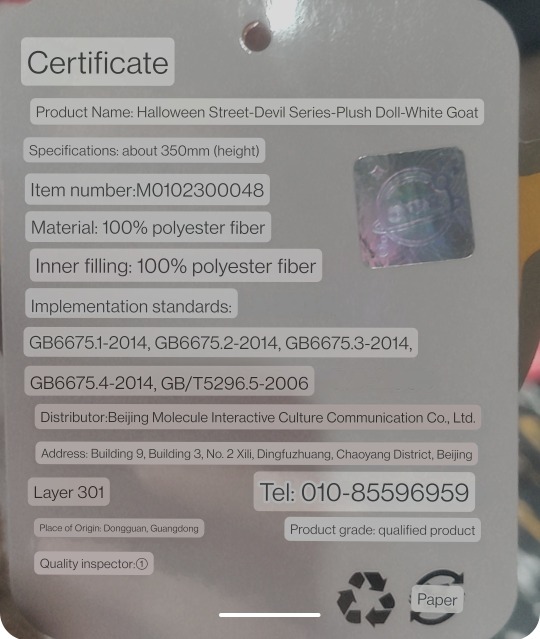
Not a plush toys collector at all; my closest reference is the IKEA shark. He is heavier than he looks, very sturdy (?) if that makes sense. Doesn't seem like he will deform any time soon. The details are adorable and I don't see any glaring defects.
All Saints Street Hoodie

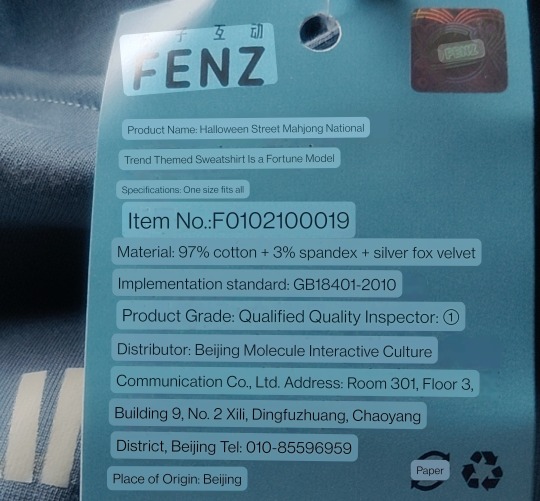
Surprisingly large for me. I was worried they only had one size made for the Chinese market. I'm 1.7m (5 foot 7) tall for reference and this is still a bit too big for me. Will likely get too small for anyone over 6 feet tall. The quality is good! Very soft. Velvet interior. I don't know much about shirt stamping, but since it's not in the fabric I'm guessing the stamp might start to crack after multiple washes.
All Saints Street Vol. 1-3 Collection

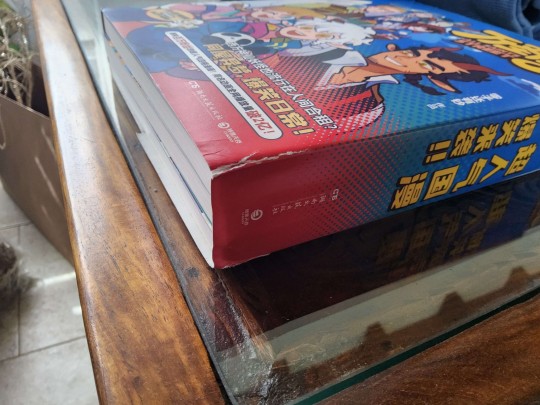
Now this is something I can talk about more. The sleeve was unfortunately damaged in shipping and the books have very minor damage in the spine and vol 2 has a minor case of dog ears. The quality of the paper is great! It is color paper, not glossy one you see in comic book issues, but it's thicker than the black and white you see in manga. Would still make sure to have a dehumidifier if your storing place is not dry. I've already experienced book wrapping and it's painful.

Each volume contains around 80 chapters with one extra chapter not on bilibili. They also contain a message from Lingzi and WSJ's editor, plus all character bios even for ones we never got one (Enrique, Eduardo ans Anthony). And if a Weibo post is correct some might have been updated from the ones online (Axel grew 1 cm in the book bio).
Of course later I'll look over everything to see if there are any significan changes to make a note of. Also it came with this lol.

I have the Alice in Wonderland art somewhere, I'll post it later as well.
All Saints Street Anniversary Playing Cards

The playing card decks from the 6th and the 7th anniversary. As you can see I haven't opened the 7th, but I got the 6th a while ago on AliExpress so I expect them to be similar.
This is something else I can review more in depth, coming from a family that loves playing poker. The quality of the prints is beautiful, however I keep them in the box all the time because the quality of the cards itself is not good!
The cards feel like store bought cardboard; good playing cards are made out of cardboard, but this deck doesn't have the same treatment. They are so fragile, even by just handling them to get the face cards I've already made slight damage to the edges. I wouldn't play any game with them, much less shuffle them. I don't even want to imagine how much they will bend. Also the Crystal card came with damage (the small white spot on the edge) from the store. Pain.
Anyways. I'll frame the face cards because they are so pretty and I want to keep them in the best condition... I don't know what I will do with the rest of the 36 cards. Maybe practice magic tricks? Lol. Before all this I've been working on how to scan all the face cards and post them, but it's been more difficult than expected. If you have ever tried to digitize prints you will know. Once I have them, I'll post them alongside high quality scans.
When it comes to my review of PandaBuy... On one hand it was an excellent service and experience. On the other... I don't even want to reveal how much the shipping was. I wouldn't recommend anyone else do it unless you are stupid with your money (like me), even then
I would advice to do your own research. PandaBuy and all agents to buy from China are definitely better when you buy in bulk. My package was 'only' 2kg. Many people buy over 10kg to make it worth it. I'm already committed so if new volumes come out I will buy them, and maybe also get counterfeit Gucci shoes or something since that's what most people use this agents for...
That's all for now. Feel free to reply or send any questions you have.
33 notes
·
View notes
Text
The Disease Of Scheuermann: What You Should Know!
Did you know that Holger Scheuermann, a Danish orthopaedic surgeon who initially characterised the Scheuermann disease in the early 1900s, received his name from the condition? For more information, keep reading.
The musculoskeletal condition Scheuermann's disease, also called Scheuermann's kyphosis, mainly affects the spine. Atypical spinal growth, which causes kyphosis, or a rounded or stooping posture, distinguishes Scheuermann's disease.
It is unclear what causes Scheuermann's disease. It is thought to result from a combination of hereditary and environmental causes. Numerous study results suggest a genetic risk. Environmental elements like poor posture, spinal tension, or food limitations during periods of rapid growth may also impact how it develops.
What Is The Disease Kyphosis?
Kyphosis is the medical term describing an unnatural forward curve of the spine. It can refer to a particular ailment known as kyphosis or be used as a general term to indicate an excessive upper back rounding. Kyphosis can be structural or postural and can affect persons of all ages, from infants to older people.
Teenagers are prone to postural kyphosis, which is typically brought on by poor posture. It can be reversed and has nothing to do with spine structural issues. Postural kyphosis can be treated with exercises, postural correction, and back muscle strengthening.
An aberrant spine curvature is caused by structural deformities such as congenital anomalies, Scheuermann's disease, osteoporosis, or spinal fractures. A few illustrations of structural kyphosis are as follows:
1. Scheuermann's Kyphosis
Scheuermann's illness, as was previously mentioned, is a specific kind of kyphosis characterised by abnormal spinal growth during adolescence, resulting in a rounded upper back.
2. Inborn Kyphosis
This kyphosis begins at birth and grows abnormally as the spinal vertebrae develop.
3. Kyphosis Brought On By Osteoporosis
Osteoporosis deteriorates bone strength and increases the risk of compression fractures. Multiple compression fractures in the spine can cause an increase in forward curvature and kyphosis.
4. Kyphosis Caused By Trauma
This kind of kyphosis may occur due to spine fractures or other injuries, which could cause the vertebrae to collapse or misalign.
Scheuermann's Disease Symptoms
Some of the most typical Scheuermann's disease symptoms, also known as Scheuermann's kyphosis, are listed below:
1. Kyphosis
The characteristic feature of Scheuermann's disease is an abnormal forward curving of the upper back, which results in a rounded or slumped posture. It is readily apparent and can be mild to severe.
2. Pain In The Back
A lot of people, to varying degrees, are affected by Scheuermann's disease, which frequently manifests as upper back (thoracic) pain. The discomfort may be mild or even severe, and it may get worse with activity or after spending a lot of time sitting or standing.
3. Stagnancy And Less Flexibility
Scheuermann's illness can result in several symptoms due to aberrant spine curvature. It could be challenging to bend or twist the back as a result.
4. Tiredness
Due to spinal stress, people with Scheuermann's illness may grow tired or uncomfortable after exerting themselves physically for an extended amount of time or while maintaining an upright position.
5. Muscle Cramps
Muscle cramps in the back might occur infrequently and hurt or be uncomfortable.
6. Uneven Shoulders Or Prominent Shoulder Blades
Due to the curvature of the spine, the shoulders may appear unequal, with one being higher than the other. The shoulder blades can be seen if they are prominent.
In uncommon neurological situations, the spine's nerves may be compressed or irritated, resulting in symptoms including numbness, tingling, or weakness in the legs. These neurological symptoms are less frequent, though.
The Disease Of Scheuermann Treatment
Controlling symptoms, improving posture, and preventing the progression of the spine's curvature are the main objectives of treatment for Scheuermann's disease. Depending on the condition's severity and individual features, the course of therapy may alter. Here are some common medical remedies:
1. Monitoring And Observation
If symptoms are mild and the degree of spine curvature is not severe, a cautious observation strategy and routine checkups may be advocated in milder cases of Scheuermann's illness. This is particularly true if the individual's growth spurt has passed because the problem often stabilises with skeletal maturity.
2. Stretching And Exercise
Physical therapy exercises can benefit posture, the strength of the back and core muscles, flexibility, and pain management. A physical therapist can design a personalised exercise programme appropriate for the patient's needs and guide proper body mechanics and postural awareness.
3. Pain Control
Scheuermann's disease-related pain and inflammation can be managed with over-the-counter medications. Before using a medicine, visit a doctor.
The Final Say
Consider anti-inflammatory foods, consume enough calcium and vitamin D for healthy bones, and follow a nutrient-rich diet to promote general health. When offering tailored advice, dietary requirements, restrictions, and weight-control goals should be considered.
A diet specialist can help optimise nutrition and increase general well-being even though nutrition cannot treat Scheuermann's disease. For further information, speak with the orthopaedic department at Bansal Hospital.
About Bansal Hospital
Bansal Hospital is a multispeciality hospital and is one of the leading, reputable and reliable healthcare providers trusted by patients and their families across the region. It has all the major departments, including cardiology, neurology, oncology, orthopaedics, gastroenterology, urology, liver transplant, bone marrow transplantation, nephrology, gynaecology and more. The hospital is equipped with state-of-the-art facilities and technology and has a team of highly qualified and experienced doctors and medical staff who provide round-the-clock care to the patient.
Visit Our Website
3 notes
·
View notes
Note
hi! i was wondering if you had any ideas for designing a warriors character who needs something similar to a back brace for support? i really love your ideas and guides on like wc hrt and the such and figured you might be a good person to ask!
Oh anon if you give me a week or two, I will make you a beautiful treatment guide just like my HRT and Epilepsy ones. But I need to ask you to clarify; what sort of back brace are you looking for?
I'll need to go do the research and compile it, so I need to know what you need specifically. Are you looking for a mobility aid such as a human wheelchair or a walking device, or are you looking to relieve a spine issue specifically? What sort of spine issue- an injury, or a degenerative one like scoliosis? Or just general back pain relief?
(nerdish medical babbling)
It's because depending on what you need my research will be very different- humans have a really complicated with our sudden upright transition to bipedalism so our backs are super unique and suuuuper shitty compared to a cat,
so if you're looking for, say, scoliosis I'll need to dive into kitty spinal deformities, but if you're looking for a mobility aid/general support that may look like less of a back brace and more of a leg brace, since cats don't support half of their body weight on their backs like 200-pound great apes with a superiority complex...
but, I can find other spine and PELVIS related injuries in a cat to make something resembling a back brace if you''re trying to emulate a specific medical device. Basically, I can work backwards for you if you are starting with a certain model because you want the OC to represent someone you know or love
TL;DR: Sure thing! I just need a few more details.
18 notes
·
View notes
Photo

Photo by Valentin Balan on Unsplash
* * * *
This beautiful poem is one way to express how glad I am for my work. It is a privilege to help people in this life and to have learned skills and [more importantly] ways of being and living that taught me the value of helping other people. It is almost 50 years for me having graduated an unusual college. In that space I was taught and nurtured by many extraordinary beings. It was truly an education of both heart and mind. After college the learning and the teachers continued. They continue all the way up to this present day. I’ve been reflecting on the singular people who have been my teachers over the years. I hope I have given back some small portion of what I have received.
I Tell You
(excerpt)
I could not predict the fullness
of the day. How it was enough
to stand alone without help
in the green yard at dawn.
How two geese would spin out
of the ochre sun opening my spine,
curling my head up to the sky
in an arc I took for granted.
And the lilac bush by the red
brick wall flooding the air
with its purple weight of beauty?
How it made my body swoon,
brought my arms to reach for it
without even thinking.
*
In class today a Dutch woman split
in two by a stroke - one branch
of her body a petrified silence,
walked leaning on her husband
to the treatment table while we
the unimpaired looked on with envy.
How he dignified her wobble,
beheld her deformation, untied her
shoe, removed the brace that stakes
her weaknesses. How he cradled
her down in his arms to the table
smoothing her hair as if they were
alone in their bed. I tell you -
his smile would have made you weep.
*
At twilight I visit my garden
where the peonies are about to burst.
Some days there will be more
flowers than the vase can hold.
~ Susan Glassmeyer ~
(The Incomplete Litany of Untold Stories) :: [Echoes of Panhala]
#vocation#bodywork#body alive#Susan Glassmeyer#my reflections#ReUnion Process#INRI#Structural Integration Atlanta
6 notes
·
View notes
Text
Diagnosis and Treatment of Spondylolisthesis
In spondylolisthesis, the vertebrae slips and the spinal nerves come under extreme pressure that starts causing immense lower back pain. The condition is classified into low-grade and high-grade spondylolisthesis by the spine specialist in Ahmedabad, both of which are the reason for spine overextension. Here is a complete overview of the types, causes, symptoms, diagnosis, and treatment of spondylolisthesis.
#spine hospital ahmedabad#spine specialist#spondylolysis surgery in Ahmedabad#spondylolisthesis treatment in Ahmedabad#lower back pain treatment#spinal deformity treatment#indospine hospital
1 note
·
View note
Text
Balaji Hospital's expert anesthetists ensure safe surgery.
Balaji Hospital's skilled anesthetists provide top-notch surgical care using advanced techniques and equipment, ensuring safety and comfort throughout the procedure.
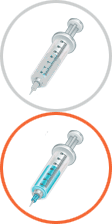
#Anesthetist#Neurosurgeon#Complete cancer care#Onco Physician#Multi disciplinary treatment to rehabilitation#Onco Surgery#Children with spine and limb deformities#Orthopedic Surgery#Pediatrician#Spinal cord injury#Physiotherapist#Reconstructive surgery#Hand surgery#Microsurgery#Treatment of burns#Plastic Surgery#Emotional illness#Psychiatric#Interventional radiology#vascular radiology#Palliative medicine#Radiologist#Comprehensive diagnostic and treatment services#Urology#Ventilator for artificial breathing#40-bed hospital#Holistic approach to illness#4 Different Health checkup Plans#Delivering quality health care#40 beds ISO 9001:2000 certified Hospital
0 notes
Text
Congenital Clubfoot: Symptoms And Causes
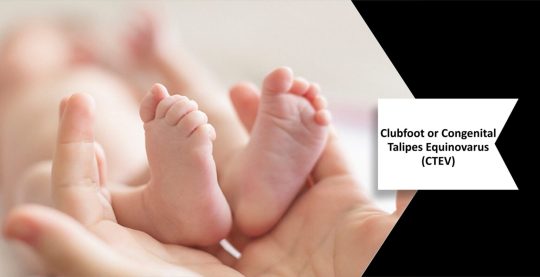
Clubfoot is one of the most common birth defects of the foot. Out of one thousand new-born babies, one to two have this deformity. This deformity affects a new-born’s muscles, tendons, and blood vessels. It is caused when the tissues that connect the muscles to the bone are not the usual size. In congenital clubfoot, one or both feet are rotated downward and inward. It is also known as congenital talipes equinovarus in medical terms, and the child born with this deformity can’t place their foot flat on the ground for walking. Clubfoot is not painful, but if this congenital disease is not treated on time, the foot will remain deformed forever. Mostly, clubfoot can be treated without surgery, but in severe cases, follow-up surgery is required later on.
Types of Clubfoot
Clubfoot can be divided into two major categories non-isolated clubfoot and Isolated (idiopathic) clubfoot. Isolated clubfoot is a common musculoskeletal birth defect. It generally occurs without any other medical problems. On the other hand, non-isolated clubfoot happens along with other serious medical problems, including arthrogryposis and spina bifida. Arthrogryposis is a joint problem, and spina bifida is a neural tube disorder. If anyone in your family has clubfoot, your baby will be at higher risk of congenital clubfoot. Also, boys are at a greater risk of developing clubfoot than girls. Babies also have a higher chance of developing clubfoot if they have another birth defect known as spina bifida. Women who had oligohydramnios during pregnancy are also at a higher risk of having a clubfoot baby.
Symptoms of Congenital Clubfoot
If your new-born baby has clubfoot, their foot will be twisted inward and downward. The affected foot or leg will also be slightly shorter. In some cases, the foot is so severely turned that it seems as if it is upside down. Clubfoot is a serious health concern that will not improve on its own without any treatment. A baby with untreated clubfoot will use the outer edge of their foot to walk, leading to painful calluses. But with proper treatment, clubfoot can be treated, and your baby can lead a normal life.
How can clubfoot affect your baby
Clubfoot will not affect your baby until your child starts to walk. Untreated club food can limit your baby’s daily activities. They might have difficulty walking, standing, and wearing their shoes. A child with clubfoot may walk on the top and side of their feet. Clubfoot can also lead to calluses which is a thick layer of skin that usually develops on the foot’s sole. It can also lead to arthritis, a disease that causes stiffness and painful inflammation of the joints.
Causes of clubfoot
The definite cause of clubfoot has still not been identified by the researchers. But according to a popular theory, clubfoot is caused due to environmental and genetic factors. Families with a history of clubfeet are at higher risk of this disease. If a pregnant woman has one child with clubfoot, their chance of having a second child with this deformity is 1 in 35. In some cases, clubfoot is also linked to spina bifida, a congenital deformity that mostly occurs when the spinal cord and spine have not formed properly. Sometimes it can be linked to a developmental dysplasia of the hip or a developmental hip condition called hip dysplasia. If one of the parents has clubfoot, there is a 1 in 30 chance that your baby will have it. In 20016, research was conducted in which it was shown for the first time that a gene variation that processes folate in the body might be the cause of clubfoot.
2 notes
·
View notes
Text
Character Sheet: Runilaros
About
Full Name: Runilaros Culinarian
Nickname: Runi (by his parents and elder brothers)
Age: 6507 (By the end of the Third Age)
Date of Birth: 21st of January, FA 545
Species: Silvan Elf
Gender: Male
Sexual Orientation: Gay
Home: Lothlorien
Current Residence: Rivendell
Occupation: Physician
Combat
Weapons training: No training with physical weapons, except for magical staves and rune-stones
Physical strength: More scholarly than combative– thus considered weak
Speed: average
Powers: healing magic, the ability to raise and communicate with the dead, learned through studies of necromancy; the ability to create and use runestones
Relationships and Family
Parents: Lovilas (father, deceased) Endariel (mother)
Siblings: Three older brothers: the eldest, Telarendil; the second oldest is Varanil; and the third oldest, Corvaros
Children: Oriinthel (adopted daughter)
Grandchildren: none
Pets: four cats— among them Conch, Coral, Skipper, and Sandy
Current Partner: Elentelume
Have they ever been married?: no
Are they in any kind of romantic relationship?: yes
Physical
Height: 6’8”
Weight: 200 lbs
Body build: thin
Eye Color: Gold
Glasses or contact lenses?: Yes, to correct nearsightedness
Hair Color: Dark brown
Type of hair: Thin, smooth
Hairstyle: Long, pulled back into a braid.
Complexion and skin tone: Light (due to time spent indoors); Somewhat aged, though not necessarily old
Do they have any disabilities?: Yes; has had a ventricular septal defect (VSD) since birth, as well as Thoracic Scoliosis— for which he wears a leather and steel brace— and nearsightedness. These conditions tend to make long travel difficult, as he becomes tired easily and is at increased risk of heart disease.
Mental Characteristics
Native language: Sindarin
Secondary Languages: Quenya, Common
Personality type: INFT
Any Mental Illnesses: Anxiety, PTSD (from his time with Annatar/Sauron)
Do they consider themselves religious? Not particularly, but he does venerate the Valar, as his family does.
What God(s)/Goddess(s) do they believe in?: The Valar
Biography
Originally from Lorien, Runilaros spent much of his childhood sequestered from his peers, the few that there were. The fourth and youngest son born to Lovilas and Endariel, a rune-carver and a mystic of Lorthlorien, his first six years were spent in relative peace; his older brothers doted on him, as did his parents, and he began learning magic soon after learning to read. However, at the age of seven, it became clear that there was something terribly wrong with the young Runilaros: his spine began to twist, and he could no longer play as he once had. Ashamed that their son— who they’d once claimed to be a prodigy— was so clearly deformed, and believing it was a bad sign, the couple isolated him from the settlement, ensuring that they taught him personally, and that he never “caused them embarrassment”. Only his second-oldest brother, Varanil, continued to treat him as an equal, and often took him on long walks in the forest.
Runilaros endured this treatment as long as he was able, bitter and angry as it made him; he would often escape to his studies for respite, and developed a deep knowledge of the healing arts, and rune-carving. However, by 1490 of the second age, the young healer felt he could take the isolation and shame forced upon him by his parents no longer, and he left Lorien to wander the world, though travel remained difficult, and he had little to his name but his clothes, his walking staff, and his horse.
In the winter of 1492 of the Second Age, Runilaros found himself in Eregion, though he was far from safe in his new home. The young mage survived by creating potions (of varying efficacy), doing scribe-work, and, occasionally, performing magic shows for the folk that would pass by on their way to the market.
Like everyone else in his new home, and the wider world, his life was forever changed when Annatar arrived in Eregion, and began teaching the smiths Runilaros would so often entertain, and do small chores for; and like others in the city, the young mage was taken in by the Dark Lord’s trickery. Seeing Runilaros’s natural magical abilities, and under the guise of Annatar, Sauron sent him to “friends” who would be able to help with the lad’s physical ailments, and who could teach him more than he could have ever dreamed of learning as a simple clerk or street-magician. And like so many, Runilaros believed every one of the stranger’s words, and gladly accepted the gifts of a new steel and leather brace, and knowledge of necromancy.
Runilaros spent many years learning from Sauron’s “friends”, unaware how close he was to being drawn into the fold of Mordor; but day by day, cracks in the kind facade began to show, and the young mage, with his newfound mobility and knowledge, began to grow uneasy. Just before the forging of the One Ring, Runilaros attempted to leave the care of his teachers— only to be stabbed through the chest by a morgul-blade. Only through both his knowledge of healing and necromancy was he able to survive long enough to escape to Eregion once again, where he would be halfway healed— though the wound would trouble him for the rest of his life. After he was well enough to leave the city, he did, as quickly as he was able. Ashamed of how easily he’d been duped, Runilaros sentenced himself to a sort of self-exile, vowing to spend the rest of his days— or however long he could stand it— traveling from village to village as a healer.
He spent centuries that way, battling the ever-growing, lingering wound from the morgul-blade, though it eventually became too much to bear. Having heard of the renowned house of healing in Rivendell, the Silvan made his way there, begging the lord of the house to help, even offering to serve as long as he was needed in payment. And though he was not required to stay and help, the House was peaceful, and the first place that felt like home to the physician since his early years in Lorien.
2 notes
·
View notes
Text
Physical Therapy Clinic in New York City
What Is Ehlers-Danlos Syndrome?
Ehlers-Danlos Syndrome (EDS) is a genetic disorder of connective cells that can influence the body in different ways. EDS is normally defined by joint hypermobility (think of joints that are extremely flexible and move in a much greater range than normal), joint instability, dislocations (when there is a split on the surface areas of a joint), and scoliosis. While there are other symptoms like joint deformities, skin hyperextensibility, and abnormal scarring that are present in people with EDS, this article will focus on Hypermobile Ehlers-Danlos Syndrome (hEDS).
hEDS is the hypermobility type of EDS and is believed to be the most common. Unfortunately, there is not much research to tell us precisely just how frequently it occurs. But it can be inherited from a mom and dad that carry the same gene. Alternatively, someone can be born with a brand-new anomaly, meaning that the problem is happening in their household for the first time.
Part of the reason it’s so frustrating for people with EDS to get answers is that there is no simple test for EDS. For example, your doctor can’t just take your blood and send it to a lab. To diagnose it, a doctor needs to look for joint hypermobility, indicators of malfunctioning connective tissue throughout the body (e.g. skin attributes, hernias, prolapses), a family history of the condition, and bone and joint problems. There are numerous linked signs and symptoms but they can also be the results of something else (not necessarily EDS), which makes it all the more difficult to identify. A geneticist must often be consulted to confirm a diagnosis of EDS.
This is why so many people don’t actually meet the diagnostic standards for hEDS… even though their hypermobility creates a lot of issues like pain and discomfort.
You may experience discomfort and dislocations, be prone to injury, have curvature of the spine, and have degenerative joint and bone disease. People with these symptoms may have many signs that point to EDS, however, they don’t meet the “criteria” to be diagnosed with EDS. This is why it can often take so long to actually get a diagnosis. A primary doctor may not know what exactly is going on because the tests come back “normal.” You may then go to several other specialists before finally being told you have EDS.
Joint hypermobility is currently identified on a spectrum. At one end is simple hypermobility, which doesn’t have any signs or symptoms. And at the other end is hEDS. If you have something in between, that’s called Hypermobility Spectrum Disorder (HSD).
If you have HSD or hEDS, the treatment and recommendations are usually very similar or the same.
Sometimes, a “provisional medical diagnosis” of EDS is made. This can happen if you meet some requirements but don’t have access to a geneticist who can confirm. In this case, if your doctor or physical therapist thinks you have EDS, they may recommend specific types of treatment that will help you with your symptoms before you can confirm the diagnosis. Many people will often start feeling better with physical therapy before getting the “official” EDS diagnosis.
Please keep in mind everyone’s experience with EDS is different. EDS can present with so many different symptoms, and the treatment path will usually vary depending on your specific case. It is crucial to avoid any doctor, or EDS physical therapist that has a one size fits all approach when it comes to treatment.
What are the symptoms and signs of Ehlers-Danlos Syndrome?
Pain and exhaustion are practically universal for people who have EDS. But remember, that is usually coupled with hypermobile joints and skin issues. For Joints, this can include:
Joint pain and deformity; muscle pain and nerve pain; loose/unstable joints; muscle stress; weakness of the throat; pelvic floor weakness; and nerve conditions (neuropathy).
Symptoms with the Skin can include:
Soft velvety-like skin; variable skin hyper-extensibility; breakable skin that tears or bruises easily; serious scarring; slow or incomplete wound healing.
#hypermobile ehlers danlos#physical therapy#shoulder pain#physical health#neck pain#knee pain#neck and shoulder pain#back pain#knee pain relief#back pain relief#chronic fatigue#eds symptoms
3 notes
·
View notes
Text
Dr Meher Tej AIIMS - Spina Bifida: Symptoms, Causes, Types & Treatment
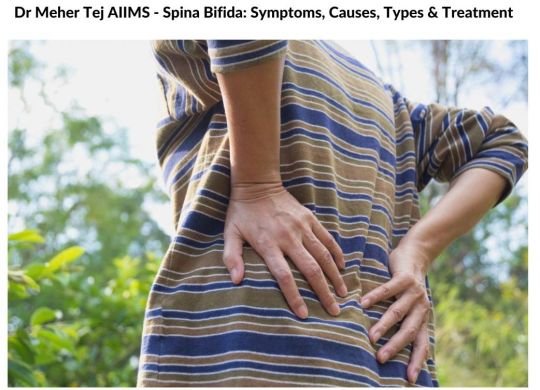
Spina bifida is one of the most common birth defects. It is the most common neural tube defect. Spina bifida is a birth defect in which the spine and spinal cord do not develop properly. Spina bifida develops during the first few weeks of pregnancy, often before a woman is aware that she is pregnant. Dr Meher Thej AIIMS says, Spina bifida occulta, meningocele, and myelomeningocele are the 3 types of spina bifida. Spina bifida occulta, also referred to as “hidden” or “closed” spina bifida and Myelomeningocele, also known as spina bifida “aperta”, or “open” spina bifida, or spina bifida cystica.
Spina bifida symptoms vary according to type and severity, as well as between individuals.
Spina Bifida Occulta: Because the spinal nerves are not involved, there are usually no signs or symptoms. However, signs such as a tuft of hair, a small dimple, or a birthmark can sometimes be seen on the newborn's skin above the spinal problem.
According to Dr Meher Tej AIIMS, Meningocele type of spina bifida symptoms include:
small swelling in the back
Fluid filled sac that is visible at birth
membranes pushing out through the opening in the vertebrae.
normal development of the spinal cord
Myelomeningocele symptoms are more severe and can include the following:
A swelling in the baby's middle or lower back which contains the membranes and spinal cord.
Bowel and bladder problems
Muscle weakness in the legs
Orthopedic problems, such as deformities in the spine, hips or feet
Seizures
Hydrocephalus
For the most part, the most likely explanation is that spina bifida is caused by a combination of genetics, nutritional deficiencies, and environmental factors. Your environment includes everything you come into contact with in your daily life, including where you work and live, what you eat and drink, and how you spend your time. Air pollution and cigarette smoke can also harm the unborn baby. Most people who have spina bifida do not have a family member with the disease. Some cases have been reported to run in families, but there is no clear indication that spina bifida is inherited.
There are three types of spina bifida by Dr. Meher Thej AIIMS:
Spina bifida occulta: Spina bifida is a mild form of the condition. Spina bifida is also known as "hidden" spina bifida. It has no opposite impacts and may go unnoticed until later in life. Typically, there is no opening in the back of the baby, only a gap in the spine. There is no injury to the spinal cord or nerves in this type.
Meningocele: In this rare type of spina bifida, a sac consisting of spinal fluid protrudes through a gap in the vertebra, causing a swelling in the back. In this type no nerves are affected, and the spinal cord is not seen in the fluid sac. Babies with meningocele may have some minor problems with functioning, problems affecting the bladder and bowels.
Myelomeningocele: The common and serious form of spina bifida. In which the spinal cord and surrounding nerves come out through open Vertebrae and exit through the back of the fetus. People with myelomeningocele have physical disabilities that limit from moderate to severe. These disabilities may include:
incontinence
difficulty going to the bathroom
inability to move or feel their legs or feet
Treatment of spina bifida will be different for each person as symptoms and severity can vary, says Boorgula Meher Thej. In some cases, especially spina bifida occulta, no treatment may be needed. However, myelomeningocele and meningocele require surgery to put the exposed sack and nerves back in place. Some of it may even need to be removed. The surgeon will then close the opening above the vertebra. A shunt may be placed to avoid complications later in life. This surgery is done soon after the baby is born. In some cases, antenatal surgery is also done while the baby continues to be within the womb. You should discuss the benefits and risks of both types of surgery with your doctor.
Another important aspect is prevention, the parents of the child with Spina bifida are counseled to take folate and zinc supplementation at least 6 months before planning the next child. Studies have shown that supplementation by 4mg Folate before and during pregnancy, decreased chances of Neural tube defects in the subsequent pregnancy by 71%. Additionally drugs which are associated with fetal abnormalities need to be avoided.
About Dr Meher Thej AIIMS
Dr Meher Thej AIIMS is a Neurosurgeon. He trained at AIIMS, New Delhi. He has experience in Neuro Oncology, Skull-Based Vascular Neurosurgery, Pediatric Neurosurgery, Functional-Epileptic Surgery, Spine Surgery and Neurotrauma. Dr. Meher Tej AIIMS in life's mission is to build a successful neurosurgical career, serve the people and grow oneself by encompassing all aspects of neurosurgery.
2 notes
·
View notes